
Racket-Tailed Emerald
June 29th, 2013
I love the sight of freshly emerged dragonflies, with their wings still glistening. My rough guess for this one is female Racket-Tailed Emerald, but feel free to correct me if you know better.

1680x1050 wallpaper
Blue Flag
June 27th, 2013
This magnificent wild iris grows around the edges of wetlands. For perspective, the surrounding stalks in the second photo are cattails.

1680x1050 wallpaper

Snipeapalooza
June 23rd, 2013
In the years I've been birding, snipe have always been mysterious, elusive creatures that I hear but don't see--or, more commonly, don't detect in any way at all. Although they're marsh birds, none of the many marshes I've explored in Stony Swamp seem to have snipe. At Shirley's Bay I've heard the sound of their winnowing after sunset, but almost never see them. I've seen them far in the distance once or twice in South March Highlands.

1680x1050 wallpaper
All that changed a week ago. I visited Bill Mason Centre at sunrise and found, not merely a sufficiency of snipe, not merely an abundance of snipe, but the motherload of snipe. Clearly that wetland is prime habitat, though why, I don't know. (I will say it feels very primeval. Like a place that humans have never interfered with, never despoiled.) They were everywhere, calling from the marsh, perching on the boardwalk railings, flying back and forth, and winnowing overhead all morning. It was incredible. Most incredible was the tameness of this so-often-elusive bird, allowing me to approach to within ten feet for close-up photographs. I can only guess that the schoolchildren who use these trails as an outdoor classroom have habituated the birds to human company.
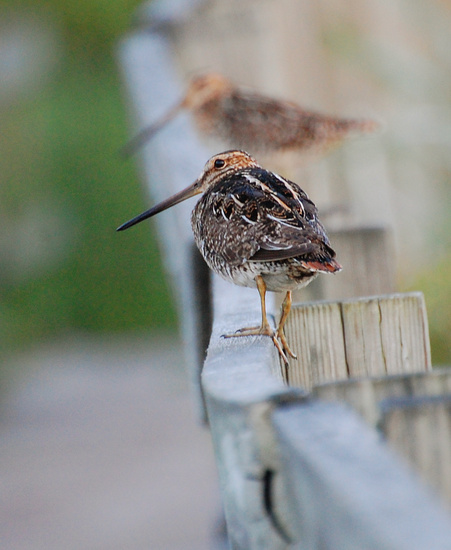
Snipe are unique members of the sandpiper family. While most of their relatives are coastal in the winter and breed in the far north, snipe are widely distributed inhabitants of freshwater wetlands. Their long bills are used to probe the mud for worms and other invertebrates. When flushed, they burst suddenly out of cover and fly away in a zig-zag pattern. I've read that the word "sniper" originally comes from them: if you're good enough to successfully hunt snipe, you're an expert marksman!
Snipe declare their territory by circling overhead in display flight. Air moving through the specialized tail feathers produces an eerie, tremulous "whoo-oo-whoo-oo" sound called winnowing. It can be heard from quite a distance away.
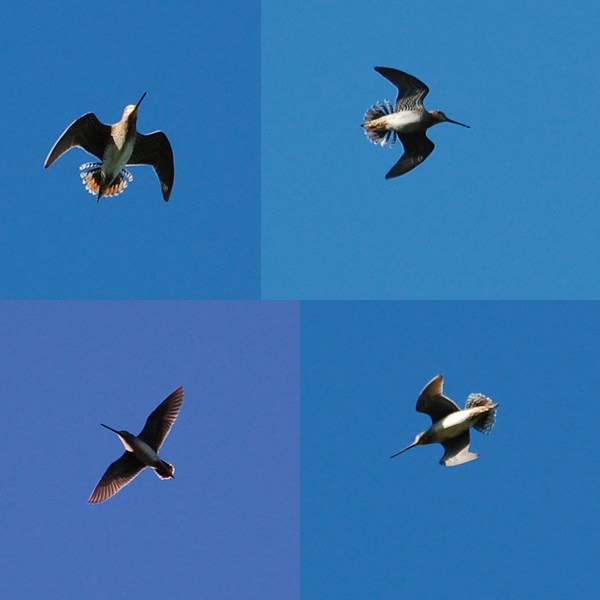
Blanding's Turtle at Carp Ridge
June 22nd, 2013
I found this turtle half-buried at Carp Ridge, apparently laying its eggs. It was big--about ten inches long, I'd say. My friend Gillian confirmed it from the photo as a Blanding's Turtle. I wish it and its offspring well. Blanding's Turtle is an endangered species. It maintains a toehold in just a few places around Ottawa, and the South March / Carp Hills area is one of them.
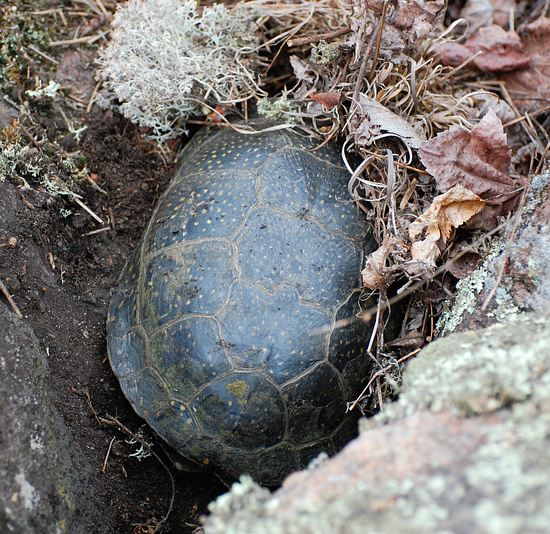
Too Perfect
June 20th, 2013
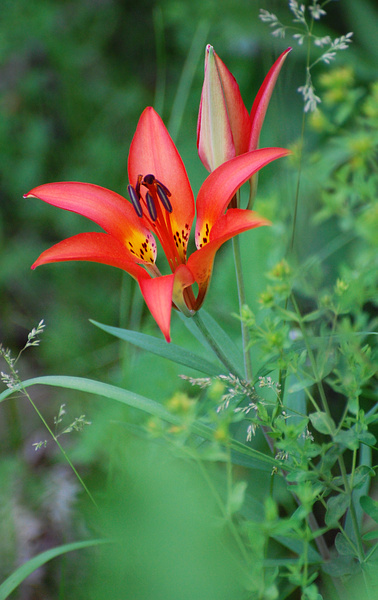
1680x1050 wallpaper
It looked like it belonged in someone's garden. But it was at Carp Ridge, blazing up out of the shady undergrowth amidst columbine and corydalis. Mike noticed it first. My flowers guide pegged it as a Wood Lily: a true Ontario wildflower, unlike the orange day-lilies that sometimes escape cultivation.
Fledgling Season
June 18th, 2013
At least for some birds, their young are out of the nest. Sometimes a young bird will leave the nest before it can fly, either by accident or on purpose (to escape nest parasites.) In such a situation, the parents get very nervous when large mammals (i.e. us) come lumbering by, and some will engage in what's called "distraction display" to try to lure us away from their vulnerable young. This is probably why those two towhees were so easily photographed! ("Easily" being a relative word, mind you. It still took a half hour's work to get unobstructed close-ups.)
I got a rather transparent distraction display this afternoon from a Winter Wren, one of the many breeding birds at South March Conservation Forest. As I approached, the normally furtive, mouselike adult wren twittered nonstop while perched in plain view. Its young, perhaps unwisely, got curious and hopped up on a log to look at me. It still had the colorful gape flanges of a nestling bird, so it probably couldn't fly yet, which explains its parent's dismay!
The adult continued to make a huge racket, so I followed it on down the trail. It led me down the proverbial garden path a bit, until it felt that I was far enough away, and then it clammed up and flew back to its young. The whole thing was very charming and definitely the high point of my hike.
Native Wildflowers Of Carp Ridge
June 15th, 2013
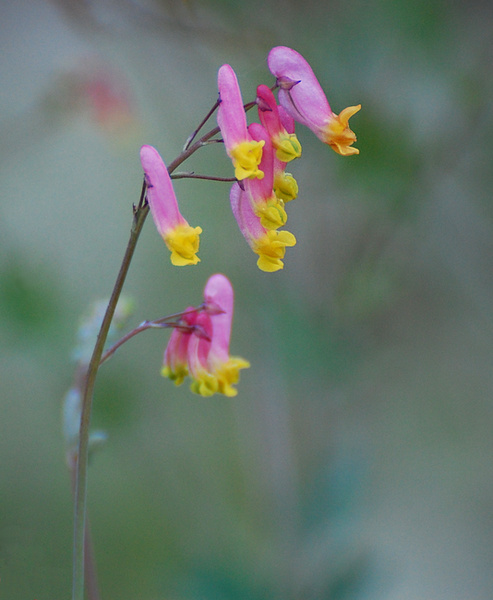
Pale Corydalis. The rugged, moss-encrusted rocks of the Carp Ridge barrens seem to be the perfect habitat for this wildflower. It grows there in generous sprays. It's the kind of "weedy" flower that is easily overlooked, but up close, quite beautiful.
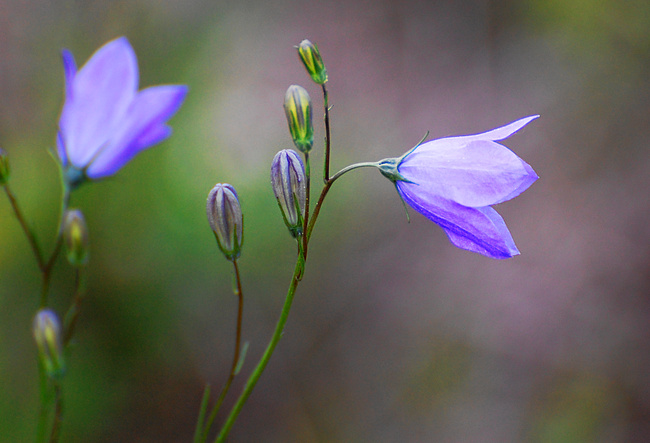
1680x1050 wallpaper
Harebells are a true Ontario wildflower, unlike the more common (invasive) Creeping Bellflower that they resemble. I find them more charming than bellflower, but then, maybe I'm just biased towards the natives!
Two Ottawa firsts, one welcome, one not
June 13th, 2013
I went exploring the Carp Ridge barrens off Thomas Dolan yesterday evening. This is a beautiful, open area of rocky ledges carpeted in mosses and wildflowers--no trails, but you don't really need them. There I got an Ottawa first, Eastern Towhee. This unusually handsome sparrow is a common bird in the southern states where I come from, but in Ottawa they are at the limit of their range, and the population is very small and very localized. Carp Ridge is one of the only places to find them.
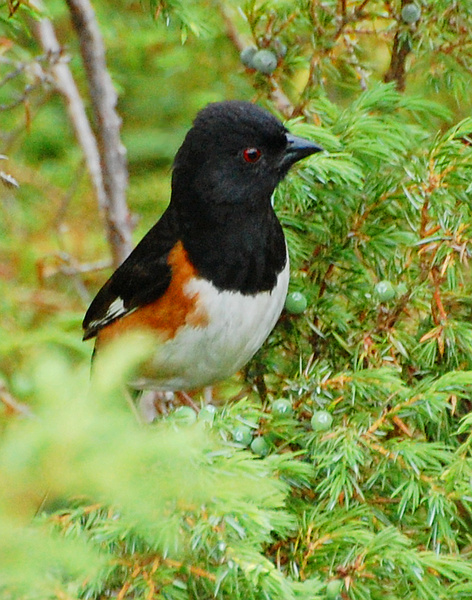
1680x1050 wallpaper
Eastern Towhee is a noisy bird of the undergrowth. It gives itself away not only with its scolding "chewink!" call and its distinctive "drink-your-tea-tea-tea" song, but with the sound of two feet vigorously scratching at the undergrowth. A foraging towhee makes as much noise as a squirrel. At Carp Ridge, they seemed to like foraging in the clumps of juniper bush. I was also happy to capture one standing in the crispy, silvery moss that blankets the rocks there.
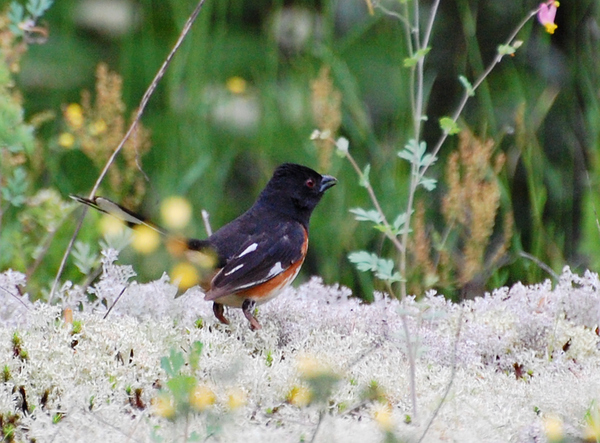
His mate keeping an eye on me:
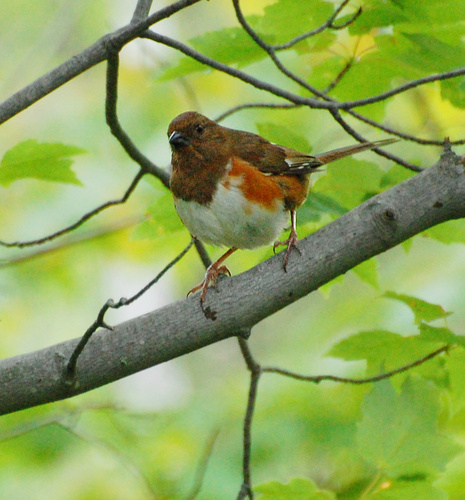
Unfortunately, I also found a second Ottawa first. A tick. A Blacklegged Tick. Yes, the type of tick that transmits Lyme Disease, and I did not so much find it at Carp Ridge as on my body, dug in and holding on for dear life, about an hour after I got home. I guess it's no surprise. I guess it's no surprise that when it finally happened, it happened at Carp Ridge: that an area known for having birds at the northern limit of their range (whippoorwill, towhee, golden-winged warbler) would also have an insect at or near the northern limit of its range. But I was in denial that such a thing was possible here. No more.
It wasn't on me long enough to transmit disease, but I'll still send it to the authorities for testing.
A Spine-Tingling Night
June 8th, 2013
Since as long as I've been a birder, I've longed to hear the call of whip-poor-wills. They're nocturnal birds, the most well-known of the nightjar family (also colorfully called the goatsuckers.) By day, they sleep on the ground or horizontally perched on tree limbs, and their dead-leaf camouflage make them almost impossible to spot. As dusk sets in, they awake and sing their names over and over.
I grew up with the sound of whip-poor-wills emanating from the woods behind our house, joining the summer chorus of crickets and tree frogs. So naturally Virginia was the first place I though to look for them. But I had no luck. I went deep into those woods (so deep that I probably ended up in Pocahontas State Park!), explored everywhere else I could think of from sunset to dusk, and never heard a one. Whip-poor-wills are on the decline everywhere. In many places they've disappeared, and unfortunately one of those places is my parents' neighborhood.
So I finally decided to put a serious effort into finding them in Ottawa instead, even though our population of whip-poor-wills is tiny and extremely localized. The plus is, here we have a vibrant birder community that can tell me exactly where to find them! So with the guidance of NeilyWorld, I drove to where Huntmar Drive crosses the train tracks, found a place to park, took a flashlight and went exploring.
It was in the woods where it finally happened. I'd been listening for some time to the evensong of veeries and wood thrushes when a distant whip-poor-will joined in. I actually didn't register it at first, and by the time I had it stopped. But ten minutes later another one started up, this one startlingly loud and close!
I spent the next hour or so, to dusk and beyond, trying to actually see one so I could lifelist it, but with no luck. My eager approaches seemed to scare them away, or at least scare them silent. But really, just hearing them is what I was hoping for! And I now understand what Peterson's meant by "tiresomely repeated." It's like they don't even stop to breathe. Although there are the occasional lulls. One long lull was finally punctuated by the spine-tingling sound of a pair of coyotes howling to each other--and then a whip-poor-will immediately started up again, as if he considered that his cue!
I'm happy with Ottawa. It may not have wolves. It may not have lynxes. But so long as it still has coyotes and whip-poor-wills, Ottawa is wild enough to make me happy.
Literally A Puddle Duck
June 4th, 2013
I've been enjoying watching this fellow, a lingering spring migrant, for the last few days. It's a species I seldom see in Ottawa.
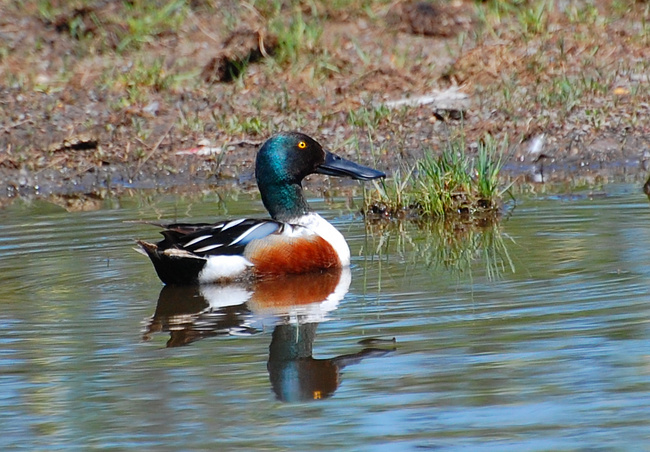
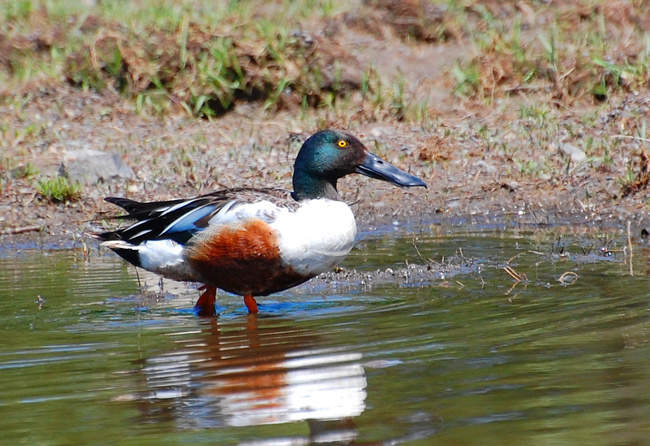
Northern Shovelers are specialist feeders that use their oversize bills to skim food from the water surface. Their bills have comb-like structures called "lamellae" that act as sieves. This one was actually on a melted snow dump along March Valley Road, and the water it was swimming in was no more than a glorified puddle. (Dabbling ducks as a group are sometimes called "puddle ducks", but it's usually not quite this literal.) Strange habitat, but birds often show up in places we don't expect, especially in migration!
|
